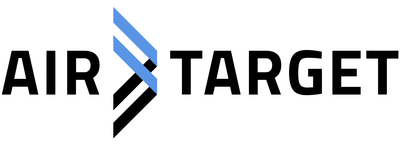Since 1956, Air Target Sweden has been a world leader in scoring technology for the defence sector. Our acoustic scoring products have been delivered to customers in more than 30 countries worldwide.
Acoustic scoring is a method of measuring the miss distance or hit between a supersonic projectile or missile and a target. The product range includes the TOR Scoring Station, Miss Distance Indicators (MDI), Uplink Command Units, Sleeve Targets, and Winches.
Cost-effective training with Air Target systems for the defence industry
The Air Target scoring station and MDIs make firing training more realistic and flexible, which is essential in modern firing training.
Using this technology can save money by reducing ammunition consumption and training time while allowing gunners and weapon system operators to receive more efficient training.
We aim to provide scoring system solutions with miss distance indicators that meet our customers’ requirements. With a mix of technical expertise and responsiveness, ensuring that we not only understand but also anticipate their needs.
We never assume comprehension until we have a clear understanding of the entire picture. At our core, we believe in delivering tailor-made solutions that exceed expectations because your success is our priority.
Leaders in acoustic scoring with optimised air targets
The air targets sleeve and MDI are optimised to provide effective gunnery and missile practice and testing for ground-to-air surface, air-to-air, and air-to-air exercises.
An Air Target MDI can be fitted to all challenging targets and drones.
The target includes MDI AS-136/12U, a high-performance Acoustic Miss Distance Indicator. The UAV-towed target is intended to be towed behind a target drone or UAV. Up to 2 IR flares or smoke can be attached to the target body.
The ground-based scoring station calculates and presents real-time firing results from up to six targets simultaneously. Windows XP-based software with an SQL database.
A ground-based bean sensor unit can be used in scenarios from air to ground and ground to ground.
Calculating projectile miss distance
An array of pressure-sensitive sensors, installed on or close to the target, detects the shock wave generated by a passing supersonic projectile or missile. The shortest distance between the target and the projectile (the miss distance), as well as the angular position of the projectile, can be calculated by the amplitude and time differences between different sensors. The scoring data are presented in real-time on a colour graphic computer display. A radio link is used for sensor-display data transmission.
Gunnery training with acoustical scoring
In the virtual scoring board, scoring provides real-time information to both the gunner and the weapon system operator. This information paints a picture of each round ‘hitting’ the scoring board. The angular position of the score and a score that is too far off can provide immediate guidance for the gunner to enhance their direction of fire. The improved results can be verified as they appear on the scoring board.
Firing situations
Acoustical scoring applies to calibres ranging from 5.56in to 5in and above, as well as missiles (rounds must be supersonic in the target area). It can be utilized across all firing scenarios, including AIR to AIR, AIR to GROUND, GROUND to AIR, GROUND to GROUND, and their corresponding naval applications.
Scoring stations
From calibres ranging from 5.56in to 5in and above to missiles (rounds requiring supersonic speed in the target area), acoustical scoring finds applicability. It serves across diverse firing scenarios: AIR to AIR, AIR to GROUND, GROUND to AIR, GROUND to GROUND, and their respective naval applications.
Miss distance indicators (MDIs)
The universal 12-sector MDI enables firing at a target (MDI) approaching from any direction. Within the same mission, the target towing operator/UAV operator can provide various target courses.
Uplink command unit
Other equipment comprises test equipment to assess the entire scoring system, sleeve targets adaptable for various applications (radar, laser), and inboard target towing winches. This facilitates remote alteration of the MDI frequency and sensitivity.
Customisation of acoustical scoring systems
One of our specialities is customising our products to fit the customer’s requirements.
Beam sensor unit
Air Target’s practice sensors offer versatility and can be placed on virtually any surface. This flexibility enables the design of realistic training scenarios for air-to-ground target practice that vary in difficulty.
With our universal angle target practice system, you can maximise training efficacy across all designed scenarios. Whether emulating tank advancements or configuring fixed targets within preferred terrains, the system allows for comprehensive optimization of training value.
Following each practice round, the pilot or ground gunner receives immediate feedback on performance, enabling continuous improvement of precision skills throughout the training session.
Enhanced training effectiveness maximizes the benefits of each fired round or missile, consequently reducing the time and cost associated with fuel and ammunition. Precision target practice not only tracks training duration but also assesses readiness for live action, ensuring thorough preparedness.
Sleeve target
Our training system underscores the importance of excellence in training with sleeve targets. Designed explicitly for honing target engagement skills against airborne threats such as aircraft, helicopters, or unmanned UAVs trespassing into your airspace, it harnesses acoustic, universal angle sensors on sleeve targets.
These sensors furnish precise data in both attack and passing modes, facilitating the creation of realistic training scenarios across varying difficulty levels. Seamless transitions between scenarios further augment training efficacy.





